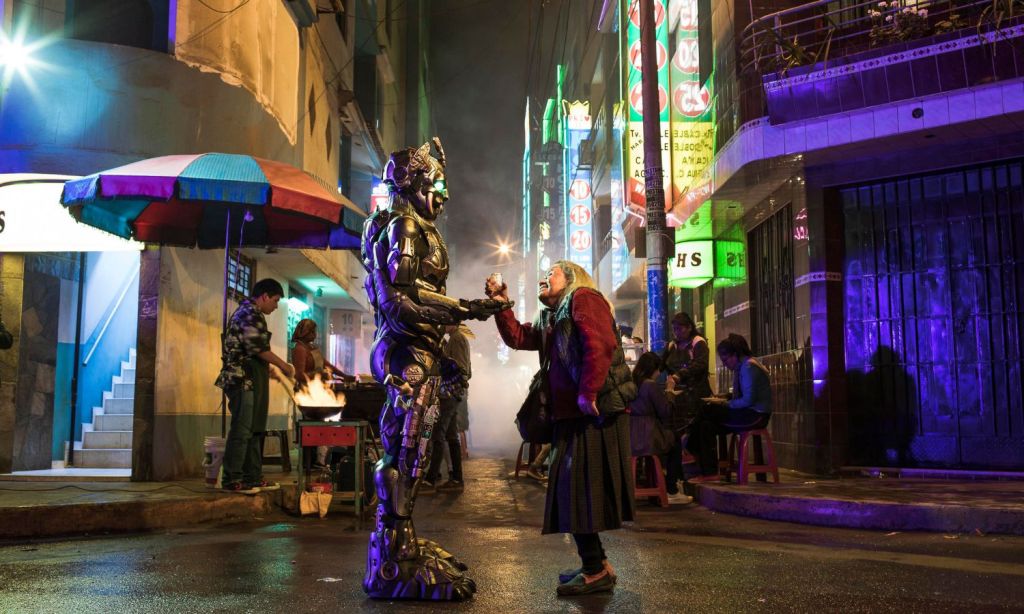The seventh installation in the sci-fi series, Transformers: Rise of the Beasts stars Anthony Ramos as Noah and Dominique Fishback as Elena, who lead a military and research team that gets caught up in the conflict between the Autobots and the villainous Decepticons on Earth.
While most of the film was shot in Los Angeles, California, scenes were also filmed in Montreal, Canada, Brooklyn, New York, and parts of Peru. For the filming in Peru, more than 30 vehicles, trucks, high-speed cars, motorbikes, and VW classics, were shipped to the country.
“Our goal is to evoke the spiritual connection that anyone feels when they are in sacred places like this and enjoy what has been achieved by this great civilisation,” said the movie’s director Steven Caple Jr.
“As a filmmaker, I find it truly inspiring to immerse our film in Peruvian culture — to film in Cusco, located high and deep in the Andes, where it is possible to find traces of a sophisticated Inca civilisation that survived over time and continues to be alive in the Cusco communities.”
Ahead of the film’s Australian release on June 22, 2023, we share some of the locations in Peru where it was shot. Add these to your South American itinerary for an authentic experience.
San Martin Region (Northern High Jungle)
Alto Shilcayo: This nature preserve is ideal for hikers and bird watchers. Take a night tour for the chance to see poisonous frogs, such as the amazing Ranitomeya.
Cascadas La Unión: Here, two small cascades fall on natural stones and form an extensive pool of warm waters, in the middle of an intense green landscape.
Distrito de Shapaja: Named after the palm called “Shapaja”, of which it features plenty, this is one of the 14 districts within Peru’s San Martin region.
Catarata Ahuashiyacu: The name of this 40m high waterfall means, in Quechua-Lamista, the “singing water” or “laughing water”. It’s one of the most visited attractions in San Martin.
Cusco Region (Southeastern Andes)
Cusco City: Cusco is often called the Archaeological Capital of America. The ancient city was organised and built in the shape of a puma, with the head located in Saqsaywaman. These days, the city center’s architecture is predominantly Colonial Spanish, built on top of the stony old city.

Saqsaywaman: A citadel on the northern outskirts of Cusco, Saqsaywaman is considered by the Spanish and chroniclers as a military building. It features stones exceeding 5 metres high and weighing 120 tonnes.
Distrito de Chinchero: In this town, the locals showcase the artisanal process of the area’s famous fabrics, made with natural fibers and dyes. Another highlight is the Archaeological Park of Chinchero, a beautiful place where terraces, platforms, walls, and stone foundations tell the story of emperor Tupac Inka Yupanqui.
Maras: Only 6.6 kilometers from the town of Maras, one of the largest salt extraction centers of pre-Hispanic origin is nested in steep valley slopes. It features a white strip of 5,000 salt ponds staggered down in terraces.

Wiñay Huayna: The name of this Inca ruin means “forever young” in Quechua. It’s difficult to reach this archaeological complex, along the Inca Trail, but the surrounding nature and stony architecture make it worth it. It’s also only a 5km walk to Machu Picchu.
Machu Picchu: Considered one of the ‘New 7 Wonders of the World’, this place may be the best example that mankind can build a structure within a beautiful landscape while still respecting natural harmony. The result is incredibly moving.
Abra Málaga: This is a private conservation area created to preserve the local Polylepis forest, which is the highest-growing flowering tree in the world, thriving as high as 5000m. The area is also dedicated to conserving the wildlife, resources and landscapes.
Related: Add ‘The Little Mermaid’’s Filming Location to Your Euro ’23 Itinerary, Stat
Read more stories from The Latch and subscribe to our email newsletter.







